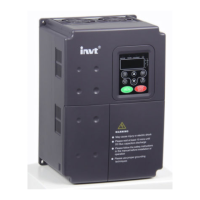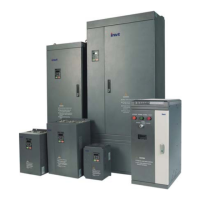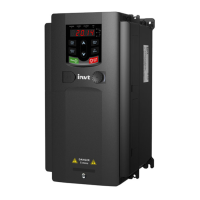IPE300 series engineering VFD Communication protocol
-288-
For the VFD, the data address in the request of the upper computer is
not allowed. In particular, the combination of the register address and
the number of the to-be-sent bytes is invalid.
The received data domain contains a value that is not allowed. The
value indicates the error of the remaining structure in the combined
request.
Note: It does not mean that the data item submitted for storage in the
register includes a value unexpected by the program.
The parameter is set to an invalid value in the write operation. For
example, a function input terminal cannot be set repeatedly.
The password entered in the password verification address is different
from that set in P07.00.
The data frame sent from the upper computer is incorrect in the length,
or in the RTU format, the value of the CRC check bit is inconsistent with
the CRC value calculated by the lower computer.
The parameter to be modified in the write operation of the upper
computer is a read-only parameter.
Parameter
cannot be
modified in
running
The parameter to be modified in the write operation of the upper
computer cannot be modified during the running of the VFD.
If the upper computer does not provide the correct password to unlock
the system to perform a read or write operation, the error of “system
being locked” is reported.
When returning a response, the slave uses a function code domain and fault address to indicate
whether it is a normal response (no error) or exception response (an error occurs). In a normal
response, the slave returns the corresponding function code and data address or sub-function code.
In an exception response, the slave returns a code that is equal to a normal code, but the first bit is
logic 1.
For example, if the master sends a request message to a slave for reading a group of function code
address data, the following code is generated:
0 0 0 0 0 0 1 1 (03H in the hexadecimal form)
In a normal response, the slave returns the same code. In an exception response, the slave returns
the following code:
1 0 0 0 0 0 1 1 (83H in the hexadecimal form)
In addition to the modification of the code, the slave returns a byte of exception code that describes
the cause of the exception. After receiving the exception response, the typical processing of the
